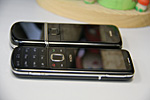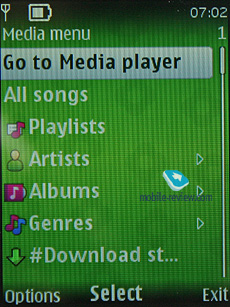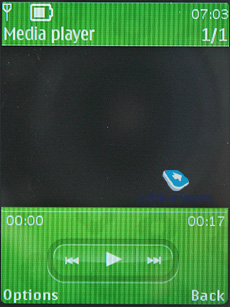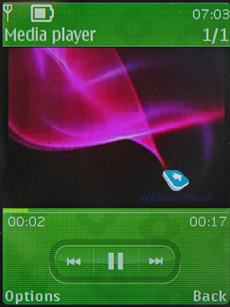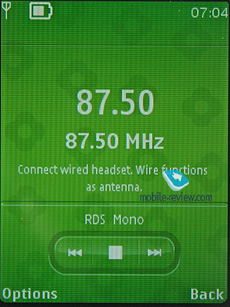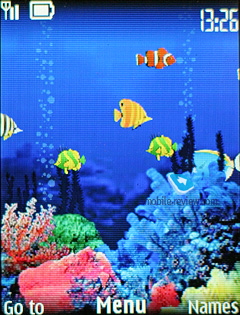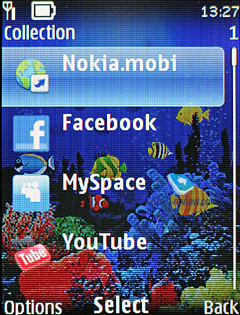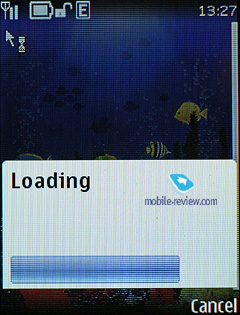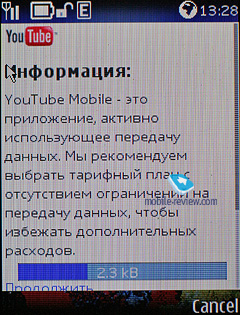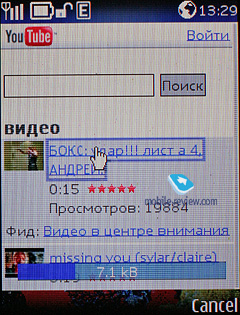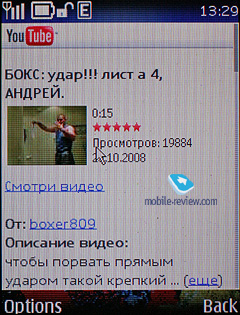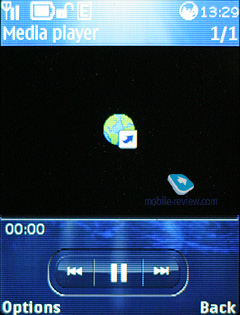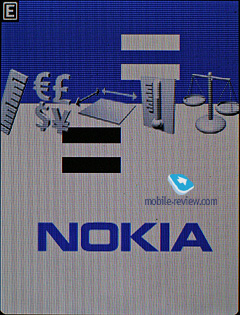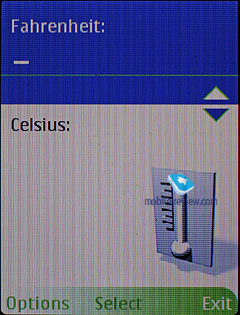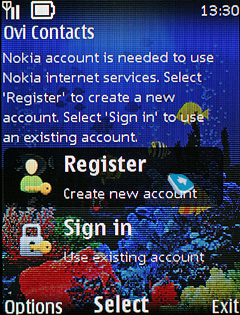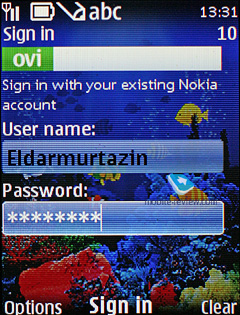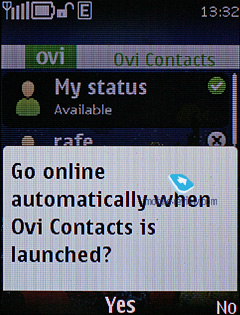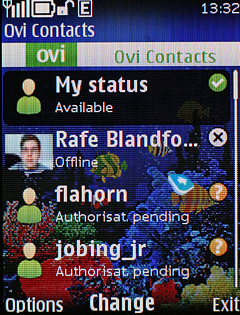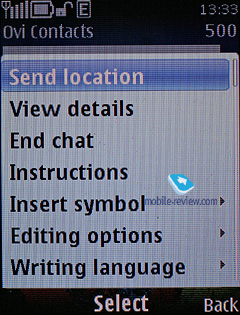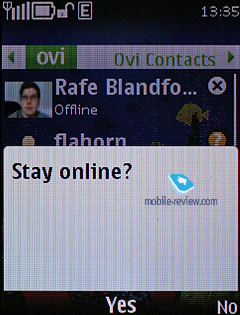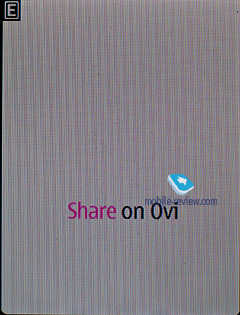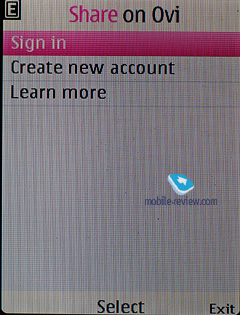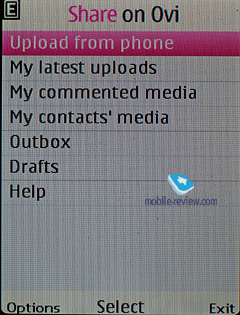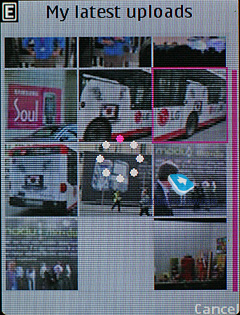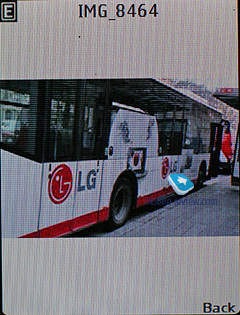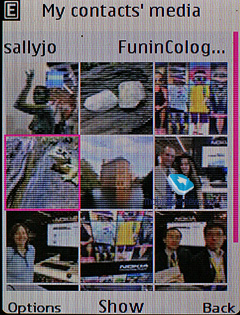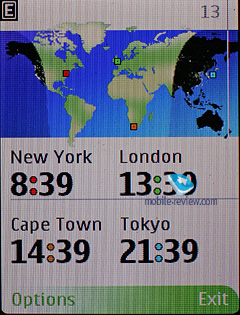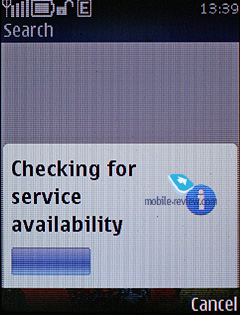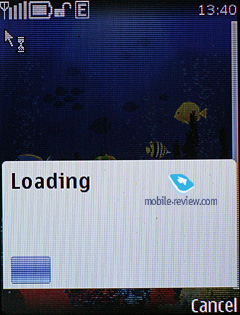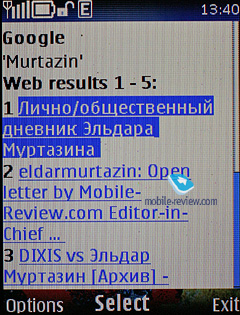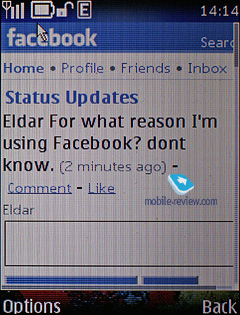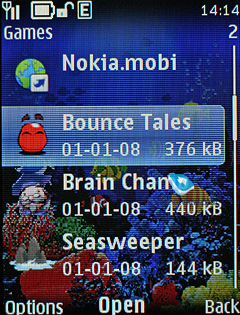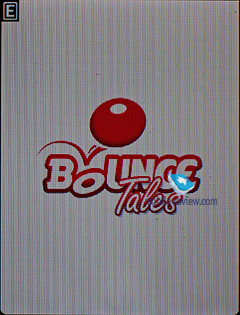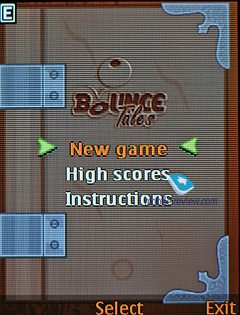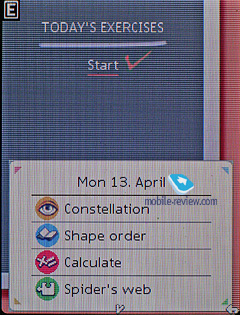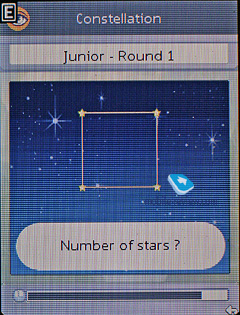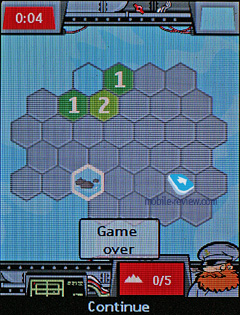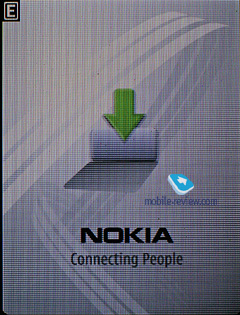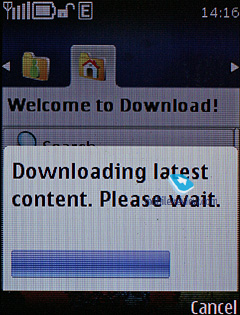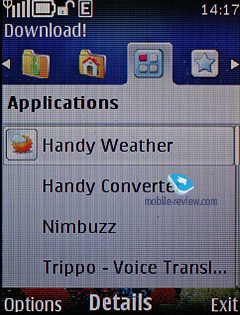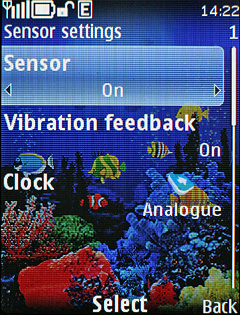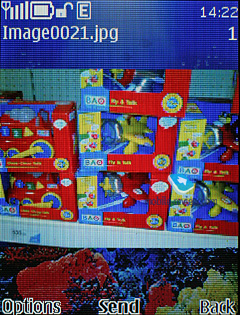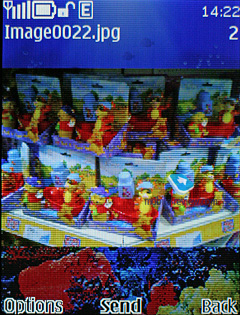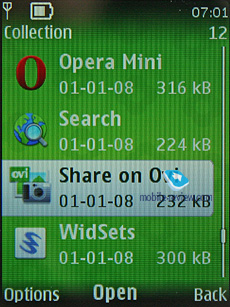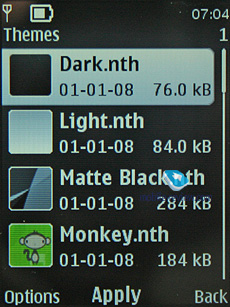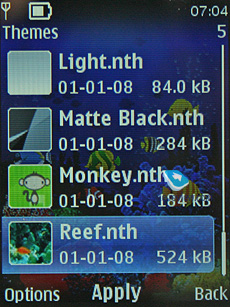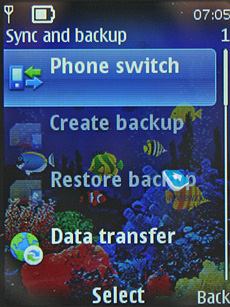|
|
Review of GSM/UMTS-handset Nokia 6700 Classic
Live photos of Nokia 6700 Classic
Table of Contents:
- Positioning
- Design, Size, Controls
- Display
- Keypad
- Battery
- Memory
- Performance
- USB, Bluetooth
- Camera
- Video
- Software
- Impressions
Sales package:
- Handset
- 960 mAh Li-Ion battery (BL-6Q)
- 1 Gb microSD memory card
- Wired stereo-headset (WH-203)
- USB-data cable CA-101
- Charger (AC-8)
- User Guide
Positioning
The Nokia 6700 comes in to replace Nokia's best selling mid-tier offering, the 6300. Although it doesn't come all alone - in reality, there is another phone designed with exactly same goal in mind, which is extremely uncharacteristic of Nokia. While those who bought the original phone a year ago or so will find the 6700 to be a worthy replacement, the Nokia 6303 will cater for the needs of the lower price segment, shipping with a very affordable price tag without any premiums and a superior feature pack.
As far as Nokia are concerned, they have always had more success with their candybar-shaped phones than any other form-factor; remarkably, though, Samsung haven't been able to squeeze much out of candybars but have managed to make their sliders sell extremely well. In fact, all Nokia's attempts to come up with mass-market slider-type solutions have been fruitless so far, so these days they prefer to utilize this form-factor for their fashion-savvy and top-of-the-line products.
Therefore it's not all that surprising that Nokia's new S40-based flagship device, the 6700, is housed in a candybar-type design. While it may appear as just another "faceless" phone running on the same platform and operating system, yet with more memory onboard, brighter display and increased megapixel count, the Nokia 6700 does have a couple of trumps up its sleeve, featuring several unseen before technologies (such as UNC and CABC). So on balance, it fits the bill as a flagship device both from technical and marketing standpoints.

As for its direct opposition, the Nokia 6700 doesn't have any; while you might argue that the Sony Ericsson C510 qualifies, it sports worse specs and is only 35 Euro cheaper which puts it in one league with the Nokia 6303 instead. Plus the 6700's affordable price tag will contribute to its success on top of the lack of competition, and also will serve as a warning to all second-tier phone makers that will have to cope with so much more pressure coming from Nokia.
Speaking of the 6700's positioning, we can't overlook the fact that it may also be considered a sequel to the Nokia 6500 Classic, as the latter won't be getting any direct successors any time soon.
Back to the table of contents>>>
Design, Size, Controls
The Nokia 6700 comes in four colors - Chrome, Matt Steel, Black and Brown. Although on its release date Nokia wiped out every mention of the Brown color scheme from their page, which leads us to believe that some carriers will be getting it as their exclusive color. It's not the first time we have seen this, and that's probably the most reasonable explanation as to why they had to remove this color scheme from their site.


The Nokia 6700 is fairly ergonomic to handle at 109.8x5x11.2 mm and 116.5 grams. The back cover is made of stainless steel, which feels pleasantly cold in the palm. Depending on what color scheme your unit comes in, it'll have different coatings, and perhaps the worse option is glossy surface since it'll pick up scratches and scuffs over time. On the other hand, the matte variant is more prone to wear and tear.
Video, Nokia 6700's deisgn, size, user interface (wmv, 21 mb) >>>

Nokia 6700 vs Nokia 6500 classic:




The Nokia 6700 packs in a 5 MP camera along with a LED flash and loudspeaker around back. Housed on the right is the volume rocker and dedicated camera button. Sitting at the bottom are the microUSB jack as well as a 2 mm charger port.


Both the phone's materials and build quality are among the best we've seen - in fact, it feels nothing like the Nokia 6303 or 6300, on the contrary, the 6700 is as sturdy and well-put together as the 8000 series all thanks to its finely polished surfaces and metallic slab on the front fascia.
Nokia 6700 vs Nokia 6303 classic:


It makes a lot of sense to compare the Nokia 6700 with the 8800 Arte, for they have similar aesthetics and materials, they even feel the same. Furthermore, the Arte’s desktop charger is fully compatible with the 6700, and its leather carrying case – it fits the 6700 Classic like a glove; it even occurred to me that it was originally designed for the junior model, given how easy it slipped inside.


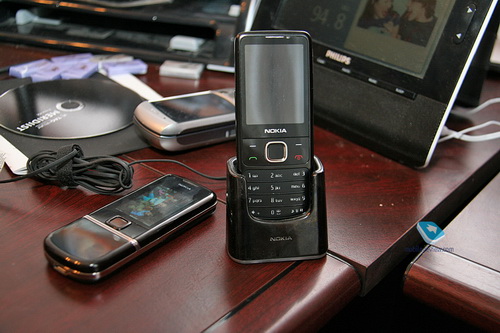
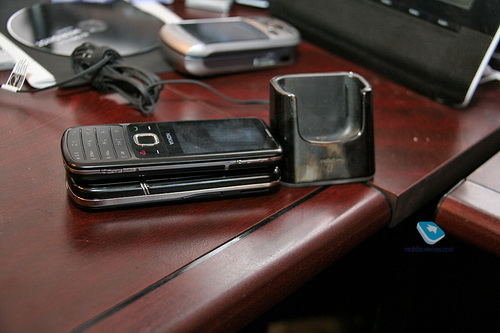
Back to the table of contents>>>
Display
The phone comes armed with a 240x320 pixel QVGA display (2.2 inch diagonal, 31x41 mm) capable of up to 16 million colors and enhanced by an ambient light sensor. The Nokia 6700 is the first phone to feature Content Adaptive Brightness Control (CABC), meaning that its backlight brightness level is adjusted not only based on your current environment, but also what's displayed on the phone's screen. For instance, when you're viewing text files or browsing web, the 6700 will reduce the display brightness and increase its contrast, or make it brighter if you're playing a game. Nokia's lab tests showed that this technology allows for up to 50 percent longer battery times compared to phones that don't pack in CABC. Although I don't believe we'll see a similar boost in battery life in practice, I think it'll still be enough to make at least some difference.

Judging from several weeks of experience with this technology, it allows saving a lot of power (maybe not 50%, but definitely in the neighborhood of 30%), while preserving the same level of comfort as before.
The screen can accomodate up to 9 text and 3 service lines, although in certain modes it allows cramming as many as 16 lines into it, while fonts remain just as readable.
Back to the table of contents>>>
Keypad
The 6700's buttons are slightly recessed into the casing, although the keypad itself is made of a single metal slab, which doesn't mean they are stiff or have short travel - on the contrary, we found them fairly to handle, it also reminded us of the Nokia 6300's keyboard. While we can't say the 6700's keypad is extremely easy to use, saying that it's poorly design would be a lie too. All buttons are evenly lit in bright white. The navigation key was a cinch to use, plus it had a service LED incorporated into the middle key that starts flashing whenever you have some missed events. Unfortunately, our images don’t show that with the backlight on all symbols look as if they’re made of differently lit dots. Needless to say, this design looks pretty appealing.
Back to the table of contents>>>
Battery
The handset utilizes a 960 mAh Li-Ion battery (BL-6Q), rated for 300 hours of standby, 5 hours of talk time, 22 hours of music, 140 minutes of video recording (top quality settings) and 210 minutes of video playback.

In Moscow the 6700 lasted around 3 days with moderate use (1,5 hours of calls and up to an hour of music, a dozen of images and several minutes of video) It takes the battery just shy of 2 hours to charge from empty to full.
Below is our chart of battery times we managed to squeeze out of the Nokia 6700:
- GPS-navigation - 3.5 hours
- Video playback - 4 hours
- WEB-surfing (EDGE) - 3.5 hours
- Music (in earphones) - 20 hours
- Radio - 22 hours
Back to the table of contents>>>
Memory
The microSD memory expansion slot (supports cards of all sizes) is perched underneath the battery, meaning that you'll need to remove it in order to extract the memory card. The handset also comes equipped with 170 Mb of built-in memory for user data and a 1 Gb memory card in the box.
Back to the table of contents>>>
Performance
The 6700 Classic is a pretty standard performer for this generation of phones, nothing to shout about here
USB, Bluetooth
USB. You pick one of these 3 connection modes in the USB settings of the 6700:
- Data Storage (Mass Storage USB) – memory cards is available, no drivers required, as your OS identifies the handset automatically.
- PC Suite – used for device management via Nokia PC Suite, enables all features of the phone, data backup etc.
- Printing & Media – no explanation required (MTP mode)
Data transfer speeds top out at around 1 Mb/s. The phone starts recharging when connected to a PC
Bluetooth. The phone comes with Bluetooth v2.1, with support for EDR. The following profiles are supported:
- A2DP
- AVCRP
- BIP-ImagePush
- DUN-GW
- FT-Server
- HandsFree-AG (1.0)
- Headset-AG
- OBEX
- OPP-Client
- OPP-Server
- SIM Access-Server
The top speed you can get with the 6700's Bluetooth connection is around 100 Kb/s. We also tested its A2DP profile in pair with the Sony Ericsson DS970 headset, which worked just fine - we managed our play list, skipped within tracks and adjusted volume seamlessly, however we couldn't make current track's title show up on the headset's display.
Back to the table of contents>>>
Camera
The 6700 comes equipped with a 5 MP autofocus-enabled camera coupled with a LED flash, being the second S40-based phone to incorporate a camera of this caliber (after the Nokia 6260 Slide). Another thing of note about it is that the phone allows you to setup the shortcut bar in the camera UI as you please. The following resolutions are supported:
- 2592x 1944
- 2048x1536
- 1600x1200
- 1280x960
- 640x480
- 320x240

It takes the 6700 around 3-4 seconds to save a shot in any of the above resolutions if you have enabled the after-shoot view. Or 1-2 seconds in case you are ready to take another snap right after that (in the latter case all images are saved from the buffer).

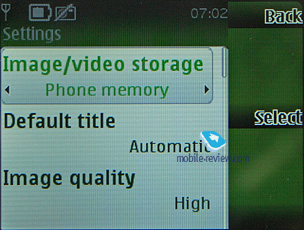

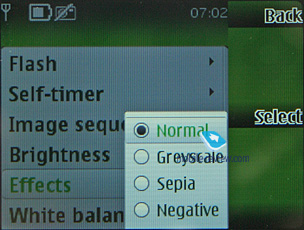
Color tones. Since these overlays can be applied to any snap in a standard graphics editor, it won't be wise of you to enable them for taking a snap on the 6700. There are four effects available - Sepia, Black & White, Vivid, Negative.
White balance. The 6700's camera does very well in the auto mode, though you can manually adjust the white balance and choose one of the following settings - Sunny, Cloudy, Incandescent, Fluorescent.
 |
 |
| (+) enlarge, 2592x1944, JPEG |
(+) enlarge, 2592x1944, JPEG |
 |
 |
| (+) enlarge, 2592x1944, JPEG |
(+) enlarge, 2592x1944, JPEG |
 |
 |
| (+) enlarge, 2592x1944, JPEG |
(+) enlarge, 2592x1944, JPEG |
 |
 |
| (+) enlarge, 2592x1944, JPEG |
(+) enlarge, 2592x1944, JPEG |
 |
 |
| (+) enlarge, 2592x1944, JPEG |
(+) enlarge, 2592x1944, JPEG |
 |
 |
| (+) enlarge, 2592x1944, JPEG |
(+) enlarge, 2592x1944, JPEG |
 |
 |
| (+) enlarge, 2592x1944, JPEG |
(+) enlarge, 2592x1944, JPEG |
 |
 |
| (+) enlarge, 2592x1944, JPEG |
(+) enlarge, 2592x1944, JPEG |
 |
 |
| (+) enlarge, 2592x1944, JPEG |
(+) enlarge, 2592x1944, JPEG |
 |
 |
| (+) enlarge, 2592x1944, JPEG |
(+) enlarge, 2592x1944, JPEG |
 |
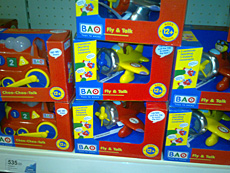 |
| (+) enlarge, 2592x1944, JPEG |
(+) enlarge, 2592x1944, JPEG |
 |
 |
| (+) enlarge, 2592x1944, JPEG |
(+) enlarge, 2592x1944, JPEG |
Back to the table of contents>>>
Video
The 6700 can record videos in several quality settings and resolutions, although the best you can get here is 640x480 pixels (VGA) at 15 FPS (MPEG4 clip). By default all clips are saved on the phone's memory card, although it's possible to set another storage place for them. Duration-wise, all videos are capped at 60 minutes, however in practice, depending on the battery charge level, you'll get from 40 to 50 minutes of video out of the 6700, and then it'll turn off. When shooting, you can make use of the camera's x4 digital zoom or opt to record without sound.
Apart from that, the video mode allows you to play around with white balance settings and various effects. The shooting modes, however, are limited to Auto and Night.
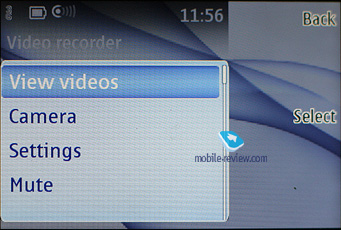
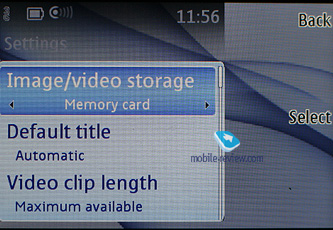
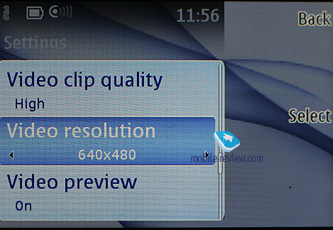
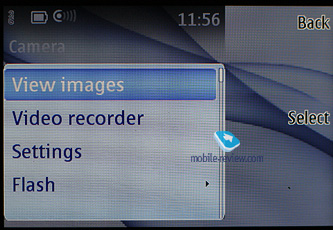

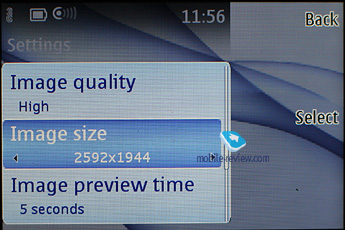
Back to the table of contents>>>
Software
The Nokia 6700 runs S40 6th edition software and doesn't incorporate any notable differences from the default feature pack, bar links to FaceBook and a couple of other online services. You can learn more about this operating system in our dedicated review.
Below is a bunch of screenshots of the 6700's preinstalled applications and features.
The phone comes with Nokia Maps 1.2, pre-installed on the memory card, and a free 30-day license that includes voice tips. The 6700's GPS navigation department fared quite well, however compared to its S60-powered siblings that already boast Maps 3.0, it wasn't quite as capable.
On top of that the Nokia 6700 sports a full array of OVI services, including mail, Share, Flickr, Windows Messenger and so on, The phone offers the user over five games right out of the box, as well as some other standard applications, such as World Time, Converter etc.
As far as other amenities go, the phone features intelligent wallpapers that go a little bit beyond already par-for-the-course time dependent animation. For example, when charging up, your 6700 will show (provided that this particular theme is on at the moment) a monkey running around the screen, eating bananas, and apparently very satisfied with a treatment like that. Same for network signal strength, battery level and so on. All in all, the Nokia 6700's themes look somewhat similar to Samsung's Living World.
Back to the table of contents>>>
Impressions
One of the technologies we overlooked in this review is UNC - Uplink Noise Cancellation. Up until this moment Nokia have been using Voice Clarity feat that improved your voice quality, but it's more of an equalizer than anything else. The idea behind UNC stems from mobile accessories and Bluetooth headsets in particular - the 6700's casing houses two microphones, and each one analyzes your current environment, trying to separate your voice from background noises. So, in theory it should provide superior call quality, compared to phones armed with only one microphone. And it does, although not always. By the way, the Nokia 6700 is not the first phone to employ this feat - the Nokia 3600 Slide and 7510 Supernova had it as well, nevertheless Nokia never touted it in thouse phones.
The 6700's bundled motion sensor allows the user to mute an incoming call or bring up the clock on the standby screenby tapping on the casing - all in all, these are the features you'd expect to find in a top-range Nokia-branded phone.
The 6700 makes another step towards true multitasking, but once again it all comes down to its browser, however the good news is that OVI Contacts can now work in the background without breaking your current GPRS/EDGE data connection (although without pop-up windows). You can call it up to the top from the menu.
We never encountered any problems with the 6700's reception quality either, plus its vibro alert was more than satisfactory.
The 6700 offers an uncompromised combination of functionality, imaging and music departments, as well as price and materials - it'll be very difficult to find a worthy rival for it as far as candbybar-shaped phones go. On balance, the Nokia 6700 is a well-rounded phone, and with its 235 Euro price tag (before taxes) that it'll put on some time in May, it's going to be one of the best ways to go out there.
The Nokia 6700 Classic is only the first sign of Nokia’s revised strategy. Later this year we’ll see the Nokia 6700 Slide that will spot similar specs, but a different form-factor and a 300-320 Euro price tag. What’s the catch? Perhaps, the fact that once it arrives, several most metamorphoses will happen to their 8000 series. Kept under wraps, Nokia’s designers retooled the whole line-up so that it’d get closer to Vertu-branded phones and at the same time implemented the old philosophy in some mid-tier solutions retailing at very affordable price points (230-350 Euro). I don’t know whether it’s the financial meltdown that we have to thank for this turn of events or not, but the only thing I can say for sure is that this move will change the way we see premium products for good and ruin the sales of many top-of-the-line phones from other manufacturers. Indeed, why would you want to shell out more for a similar feature pack and a plasticky casing, when there is an all-metal solution from the market’s leading company.
Related links
Back to the table of contents>>>
Eldar Murtazin (eldar@mobile-review.com)
Translated by Oleg Kononosov (oleg.kononosov@mobile-review.com)
Published — 17 April 2009
Have something to add?! Write us... eldar@mobile-review.com
|
News:
[ 31-07 16:21 ]Sir Jony Ive: Apple Isn't In It For The Money
[ 31-07 13:34 ]Video: Nokia Designer Interviews
[ 31-07 13:10 ]RIM To Layoff 3,000 More Employees
[ 30-07 20:59 ]Video: iPhone 5 Housing Shown Off
[ 30-07 19:12 ]Android Fortunes Decline In U.S.
[ 25-07 16:18 ]Why Apple Is Suing Samsung?
[ 25-07 15:53 ]A Few Choice Quotes About Apple ... By Samsung
[ 23-07 20:25 ]Russian iOS Hacker Calls It A Day
[ 23-07 17:40 ]Video: It's Still Not Out, But Galaxy Note 10.1 Gets An Ad
[ 19-07 19:10 ]Another Loss For Nokia: $1 Billion Down In Q2
[ 19-07 17:22 ]British Judge Orders Apple To Run Ads Saying Samsung Did Not Copy Them
[ 19-07 16:57 ]iPhone 5 To Feature Nano-SIM Cards
[ 18-07 14:20 ]What The iPad Could Have Looked Like ...
[ 18-07 13:25 ]App Store Hack Is Still Going Strong Despite Apple's Best Efforts
[ 13-07 12:34 ]Infographic: The (Hypothetical) Sale Of RIM
[ 13-07 11:10 ]Video: iPhone Hacker Makes In-App Purchases Free
[ 12-07 19:50 ]iPhone 5 Images Leak Again
[ 12-07 17:51 ]Android Takes 50%+ Of U.S. And Europe
[ 11-07 16:02 ]Apple Involved In 60% Of Patent Suits
[ 11-07 13:14 ]Video: Kindle Fire Gets A Jelly Bean
Subscribe
|
